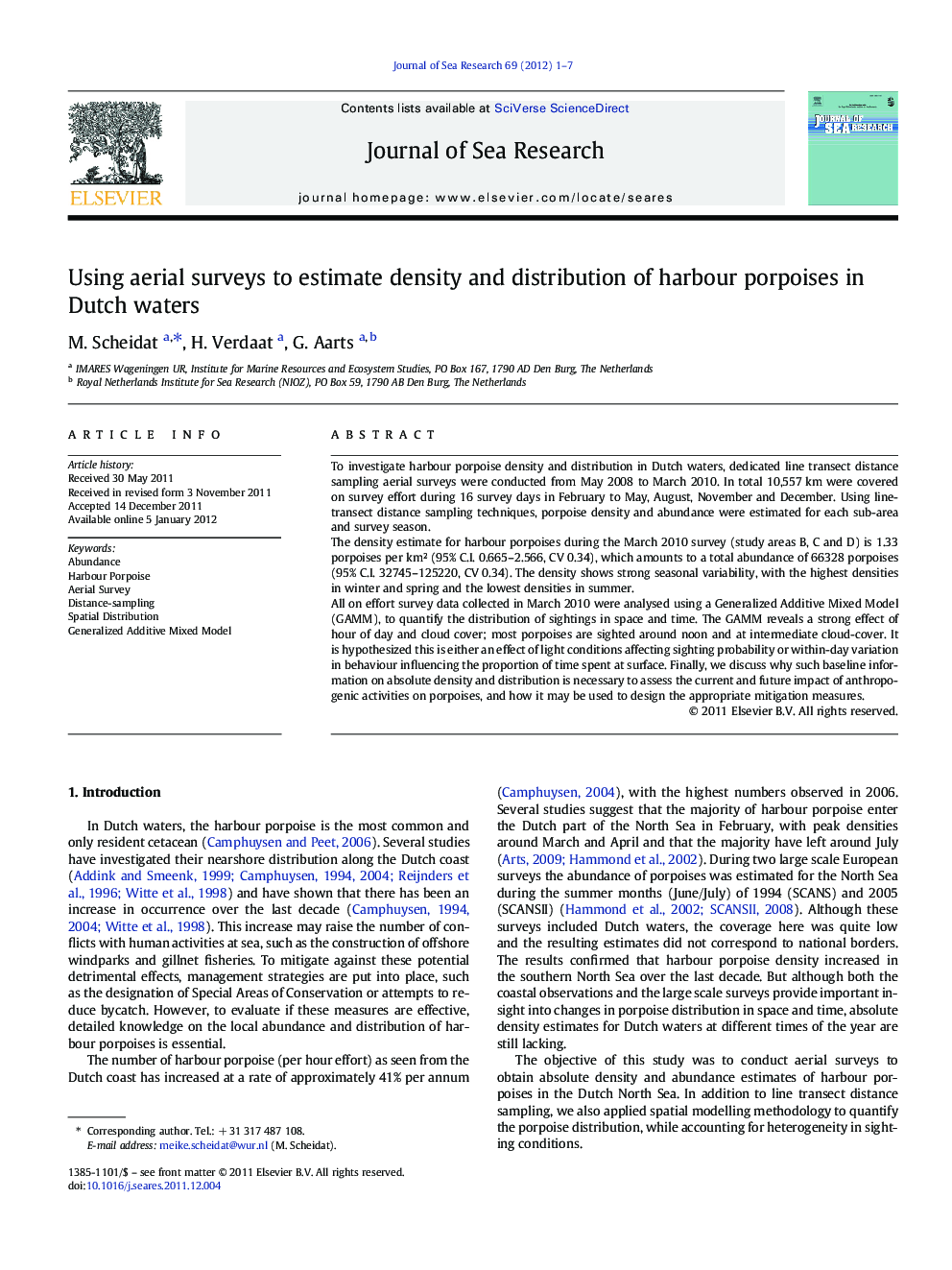| کد مقاله | کد نشریه | سال انتشار | مقاله انگلیسی | نسخه تمام متن |
|---|---|---|---|---|
| 4549996 | 1627505 | 2012 | 7 صفحه PDF | دانلود رایگان |

To investigate harbour porpoise density and distribution in Dutch waters, dedicated line transect distance sampling aerial surveys were conducted from May 2008 to March 2010. In total 10,557 km were covered on survey effort during 16 survey days in February to May, August, November and December. Using line-transect distance sampling techniques, porpoise density and abundance were estimated for each sub-area and survey season.The density estimate for harbour porpoises during the March 2010 survey (study areas B, C and D) is 1.33 porpoises per km² (95% C.I. 0.665–2.566, CV 0.34), which amounts to a total abundance of 66328 porpoises (95% C.I. 32745–125220, CV 0.34). The density shows strong seasonal variability, with the highest densities in winter and spring and the lowest densities in summer.All on effort survey data collected in March 2010 were analysed using a Generalized Additive Mixed Model (GAMM), to quantify the distribution of sightings in space and time. The GAMM reveals a strong effect of hour of day and cloud cover; most porpoises are sighted around noon and at intermediate cloud-cover. It is hypothesized this is either an effect of light conditions affecting sighting probability or within-day variation in behaviour influencing the proportion of time spent at surface. Finally, we discuss why such baseline information on absolute density and distribution is necessary to assess the current and future impact of anthropogenic activities on porpoises, and how it may be used to design the appropriate mitigation measures.
► We estimate porpoise density and distribution in Dutch waters using aerial surveys.
► Highest densities of harbour porpoises are found in winter and spring.
► A GAMM shows that most animals are seen around noon and at intermediate cloud-cover.
► We hypothesize that this is due to changes in light conditions or porpoise behaviour.
Journal: Journal of Sea Research - Volume 69, April 2012, Pages 1–7